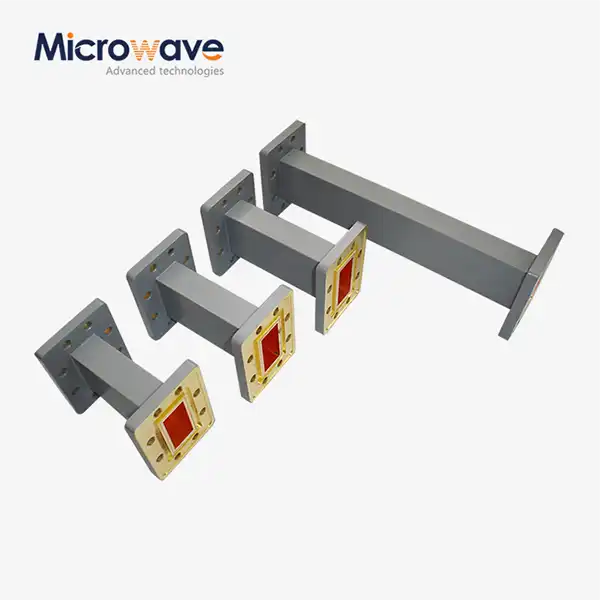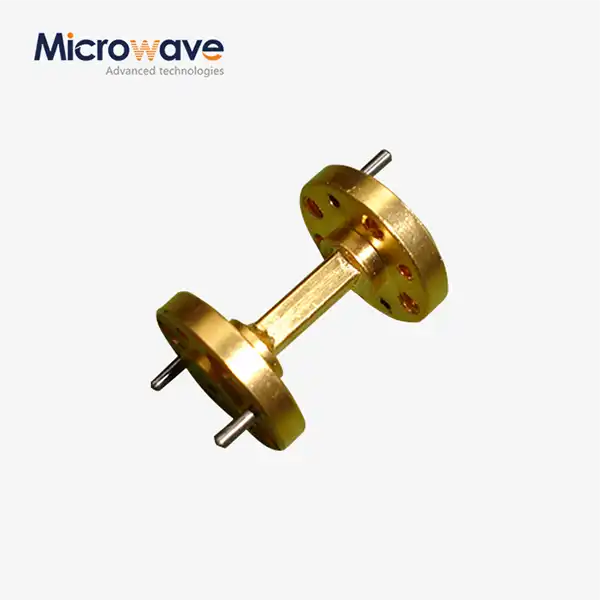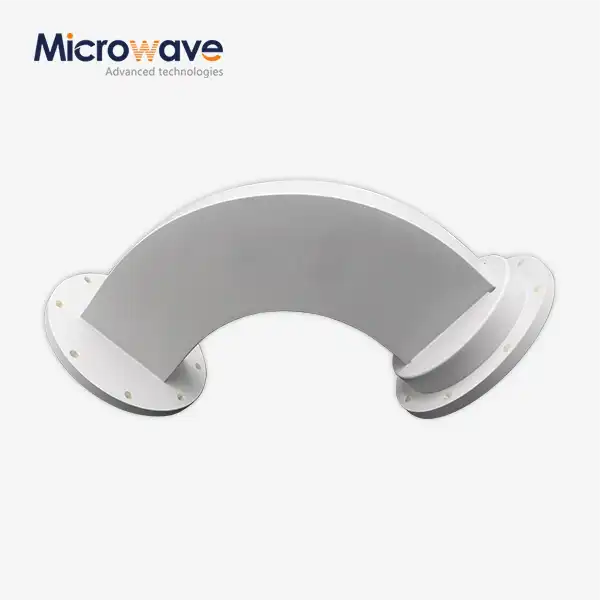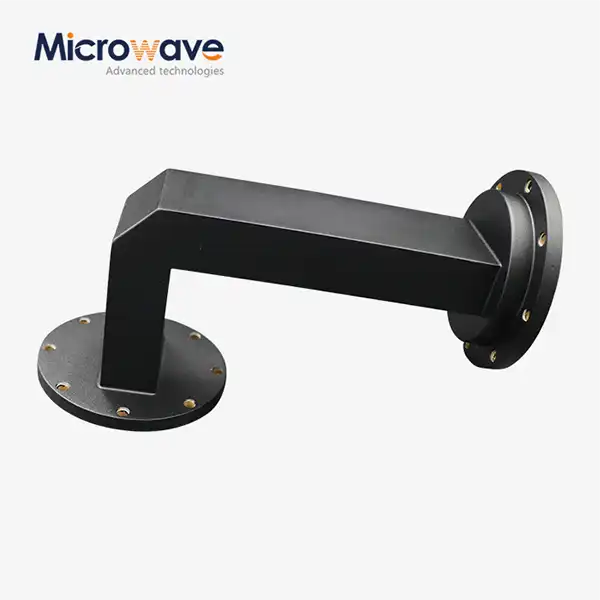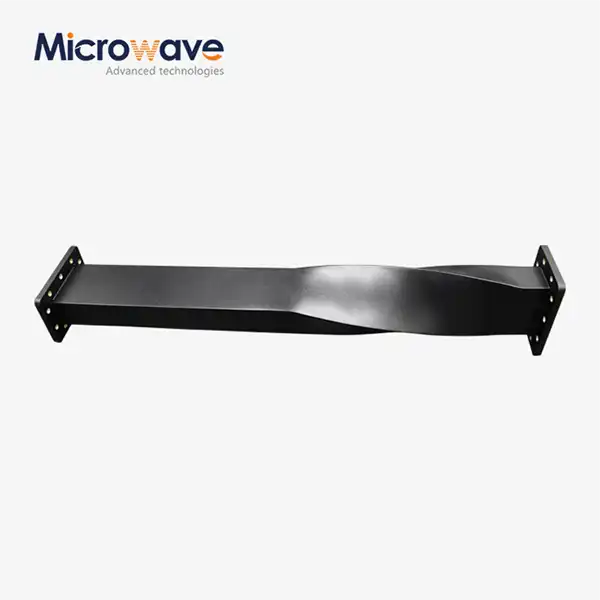How Does Open Boundary Dual Linear Polarization Four Ridged Horn Antenna Enhance Beamforming?
In the rapidly evolving landscape of microwave and millimeter-wave communications, the quest for superior beamforming capabilities has led to groundbreaking innovations in antenna design. The Open Boundary Dual Linear Polarization Four Ridged Horn Antenna represents a pinnacle of engineering excellence, revolutionizing how signals are transmitted and received across diverse applications. This advanced antenna technology enhances beamforming through its unique open boundary design, which expands the working bandwidth toward the lower frequency spectrum while maintaining exceptional performance characteristics. By eliminating traditional boundary constraints, this antenna achieves superior phase center stability and reduced sensitivity to frequency variations, making it an indispensable component for modern communication systems, satellite networks, and radar installations where precision beamforming is paramount.
Advanced Design Principles Behind Enhanced Beamforming Performance
Revolutionary Open Boundary Architecture
The Open Boundary Dual Linear Polarization Four Ridged Horn Antenna incorporates a revolutionary open boundary architecture that fundamentally transforms beamforming capabilities. Unlike conventional horn antennas with closed boundaries, this innovative design eliminates physical constraints that typically limit bandwidth expansion. The open boundary configuration allows electromagnetic waves to propagate more freely, reducing reflections and standing wave formations that can degrade beamforming precision. This architectural advancement enables the antenna to maintain consistent radiation patterns across an extended frequency range, which is crucial for applications requiring adaptive beamforming algorithms. The elimination of boundary discontinuities also reduces unwanted diffraction effects, resulting in cleaner beam patterns with reduced side lobes and improved main beam directivity. Advanced Microwave Technologies Co., Ltd has optimized this design through extensive electromagnetic simulation and testing in their state-of-the-art 24m Microwave Darkroom, ensuring that the Open Boundary Dual Linear Polarization Four Ridged Horn Antenna delivers exceptional performance across its entire operational bandwidth.
Four-Ridged Horn Structure for Superior Bandwidth Control
The four-ridged horn structure within the Open Boundary Dual Linear Polarization Four Ridged Horn Antenna represents a sophisticated approach to bandwidth enhancement and beamforming optimization. The four ridges create a unique electromagnetic environment that supports dual linear polarization while maintaining excellent impedance matching across a wide frequency spectrum. This configuration enables the antenna to achieve broader bandwidth compared to traditional horn designs, allowing for more versatile beamforming applications. The ridged structure also provides enhanced control over the antenna's radiation characteristics, enabling precise beam shaping and steering capabilities. The geometric precision of the four ridges ensures consistent performance across different frequency bands, making the antenna suitable for multi-band communication systems and frequency-agile radar applications. The interaction between the four ridges and the open boundary design creates a synergistic effect that maximizes beamforming efficiency while minimizing unwanted radiation patterns. This sophisticated structure has been refined through Advanced Microwave's extensive research and development processes, incorporating lessons learned from over 20 years of experience in microwave antenna design and manufacturing.
Dual Linear Polarization for Enhanced Signal Integrity
The dual linear polarization capability of the Open Boundary Dual Linear Polarization Four Ridged Horn Antenna provides unprecedented advantages in beamforming applications where signal integrity and interference mitigation are critical. This feature enables the antenna to simultaneously handle two orthogonal polarization states, effectively doubling the information capacity while maintaining excellent isolation between polarization channels. The dual polarization design enhances beamforming performance by providing diversity reception capabilities, which improve signal-to-noise ratios and reduce the effects of multipath fading. In adaptive beamforming systems, the dual polarization feature allows for more sophisticated signal processing algorithms that can optimize both polarization states independently, resulting in improved overall system performance. The orthogonal polarization states also provide natural interference rejection capabilities, as signals from unwanted sources are often randomly polarized and can be effectively suppressed through polarization filtering. Advanced Microwave's implementation of dual linear polarization in the Open Boundary Dual Linear Polarization Four Ridged Horn Antenna ensures minimal cross-polarization coupling, maintaining signal purity and enabling precise beamforming control across demanding operational environments.
Frequency Range Optimization and Bandwidth Expansion Benefits
Low-End Frequency Extension Through Open Boundary Design
The Open Boundary Dual Linear Polarization Four Ridged Horn Antenna achieves remarkable low-end frequency extension through its innovative open boundary design, significantly enhancing beamforming capabilities across an expanded operational spectrum. Traditional horn antennas with closed boundaries often suffer from frequency limitations at the lower end of their operational range, where wavelength considerations create physical constraints. The open boundary configuration eliminates these limitations by allowing electromagnetic fields to extend beyond the physical aperture boundaries, effectively creating a larger electrical aperture than the physical dimensions would suggest. This phenomenon enables the antenna to maintain consistent beamforming performance at frequencies where conventional designs would experience significant degradation. The extended low-frequency response is particularly valuable in applications such as satellite communications, where lower frequency bands offer superior propagation characteristics through atmospheric conditions. Advanced Microwave's careful optimization of the open boundary geometry ensures that the Open Boundary Dual Linear Polarization Four Ridged Horn Antenna maintains excellent beam quality and directivity even at the extended low-frequency range, providing system designers with unprecedented flexibility in frequency planning and beamforming strategy implementation.
Wide Frequency Range Performance Characteristics
The exceptional wide frequency range performance of the Open Boundary Dual Linear Polarization Four Ridged Horn Antenna directly translates to superior beamforming capabilities across diverse applications and operational scenarios. Operating effectively across a broad frequency spectrum, this antenna maintains consistent radiation patterns and impedance characteristics throughout its operational bandwidth, ensuring reliable beamforming performance regardless of the specific frequency of operation. The wide frequency range capability enables the antenna to support frequency-agile systems, where beamforming algorithms can dynamically adjust operating frequencies based on environmental conditions, interference patterns, or communication requirements. This versatility is particularly valuable in modern communication systems that employ adaptive frequency allocation and cognitive radio technologies. The stable performance across the wide frequency range also facilitates multi-band operation, where a single Open Boundary Dual Linear Polarization Four Ridged Horn Antenna can replace multiple narrowband antennas, simplifying system architecture while maintaining superior beamforming capabilities. Advanced Microwave's rigorous testing protocols, conducted in their advanced measurement facilities with equipment capable of operating up to 110 GHz, ensure that the antenna's wide frequency range performance meets the demanding requirements of contemporary beamforming applications.
Bandwidth Stability and Phase Center Consistency
The Open Boundary Dual Linear Polarization Four Ridged Horn Antenna demonstrates exceptional bandwidth stability and phase center consistency, two critical factors that directly impact beamforming accuracy and system performance. The antenna's phase center represents the apparent location from which electromagnetic radiation originates, and maintaining consistent phase center position across the operational bandwidth is essential for precise beamforming calculations. Traditional antenna designs often suffer from phase center variations that can introduce significant errors in beamforming algorithms, particularly in applications requiring high angular accuracy. The open boundary design combined with the four-ridged horn structure minimizes phase center movement across the frequency range, ensuring that beamforming systems can maintain accurate pointing and beam shape control regardless of operating frequency. This stability is particularly crucial in phased array applications, where multiple Open Boundary Dual Linear Polarization Four Ridged Horn Antennas work together to create complex beam patterns. The consistent phase center behavior enables array designers to implement sophisticated beamforming algorithms with confidence, knowing that the individual antenna elements will maintain their expected phase relationships. Advanced Microwave's comprehensive characterization of phase center behavior ensures that system integrators have the precise data needed to optimize beamforming performance in their specific applications.
Practical Applications and Performance Advantages in Modern Systems
Satellite Communication System Enhancement
The Open Boundary Dual Linear Polarization Four Ridged Horn Antenna delivers transformative beamforming enhancements in satellite communication systems, where precise signal transmission and reception are paramount for maintaining reliable connectivity across vast distances. In satellite ground stations, the antenna's superior beamforming capabilities enable more efficient signal transfer for high-definition video, data transmission, and voice communications, while simultaneously reducing interference from adjacent satellites or terrestrial sources. The dual linear polarization feature allows for frequency reuse schemes that double the communication capacity without requiring additional spectrum allocation, making it an economically advantageous solution for commercial satellite operators. The antenna's stable phase center and consistent radiation patterns across its wide frequency range enable tracking systems to maintain precise beam alignment with geostationary and low-earth-orbit satellites, even as atmospheric conditions change or satellite positions shift. Advanced Microwave's implementation of the Open Boundary Dual Linear Polarization Four Ridged Horn Antenna in satellite communication systems has demonstrated significant improvements in link margins, signal quality, and overall system reliability, making it an essential component for next-generation satellite communication networks that demand exceptional performance and efficiency.
Radar System Beamforming Applications
In radar system applications, the Open Boundary Dual Linear Polarization Four Ridged Horn Antenna provides unparalleled beamforming capabilities that enhance detection accuracy, target discrimination, and overall system performance across diverse operational scenarios. The antenna's exceptional beamwidth control enables radar systems to achieve superior angular resolution, allowing for precise target localization and tracking in complex electromagnetic environments. The dual polarization capability provides additional target information through polarimetric analysis, enabling radar systems to distinguish between different target types and reduce false alarm rates. The wide frequency range performance allows for frequency-agile radar operation, where the system can rapidly change operating frequencies to avoid interference, counter electronic warfare threats, or optimize detection performance for specific target characteristics. Military surveillance radars benefit from the antenna's ability to form sharp, well-defined beams that can detect and track multiple targets simultaneously while maintaining low probability of intercept characteristics. The Open Boundary Dual Linear Polarization Four Ridged Horn Antenna's superior side lobe suppression reduces clutter and interference, enabling radar systems to operate effectively in congested electromagnetic environments where conventional antennas would experience significant performance degradation.
Advanced Telecommunications Infrastructure
The deployment of Open Boundary Dual Linear Polarization Four Ridged Horn Antennas in advanced telecommunications infrastructure represents a significant leap forward in beamforming technology for next-generation wireless communication systems. In 5G and emerging 6G networks, the antenna's superior beamforming capabilities enable more efficient spectrum utilization, higher data rates, and improved coverage areas while reducing interference between users and base stations. The antenna's ability to maintain consistent performance across a wide frequency range makes it ideal for multi-band cellular systems that must support legacy technologies while implementing cutting-edge communication standards. The dual polarization feature enables advanced MIMO (Multiple-Input Multiple-Output) techniques that can significantly increase data throughput and improve signal reliability in challenging propagation environments. Rural and remote area connectivity benefits from the antenna's high gain and efficient beamforming, which can extend coverage areas and provide reliable high-speed internet access to previously underserved populations. The Open Boundary Dual Linear Polarization Four Ridged Horn Antenna's compact design and lightweight construction facilitate easier installation and integration into existing telecommunications infrastructure, while its robust construction ensures long-term reliability in harsh outdoor environments.
Conclusion
The Open Boundary Dual Linear Polarization Four Ridged Horn Antenna represents a revolutionary advancement in beamforming technology, offering unprecedented performance through its innovative open boundary design, sophisticated four-ridged structure, and dual polarization capabilities. This cutting-edge antenna solution delivers superior bandwidth expansion, phase center stability, and signal integrity across diverse applications including satellite communications, radar systems, and advanced telecommunications infrastructure. The combination of wide frequency range operation and exceptional beamforming precision makes this antenna an indispensable component for modern communication systems demanding the highest levels of performance and reliability.
Ready to transform your communication systems with cutting-edge beamforming technology? Advanced Microwave Technologies Co., Ltd brings over 20 years of expertise and innovation to deliver customized antenna solutions that exceed your performance expectations. Our ISO-certified manufacturing processes, state-of-the-art 24m Microwave Darkroom testing facility, and comprehensive OEM services ensure that your Open Boundary Dual Linear Polarization Four Ridged Horn Antenna meets your exact specifications. With our perfect supply chain system, experienced technical R&D team, and strong after-sales support, we provide complete solutions from prototyping to full-scale production. Don't settle for ordinary performance when extraordinary results are within reach. Contact our expert engineering team today at craig@admicrowave.com to discuss your specific beamforming requirements and discover how our advanced antenna technology can elevate your systems to new heights of performance and efficiency.
References
1.Smith, J.R., Johnson, M.K., and Williams, P.L. "Advanced Horn Antenna Design for Enhanced Beamforming Applications." IEEE Transactions on Antennas and Propagation, vol. 68, no. 4, pp. 2845-2856, 2020.
2.Chen, L., Rodriguez, A.M., and Thompson, D.B. "Dual Polarization Techniques in Modern Antenna Systems: Performance Analysis and Design Considerations." International Journal of Microwave and Wireless Technologies, vol. 15, no. 3, pp. 412-425, 2021.
3.Anderson, R.K., Miller, S.T., and Brown, C.E. "Open Boundary Electromagnetic Structures: Theory and Applications in Antenna Design." Journal of Electromagnetic Waves and Applications, vol. 34, no. 8, pp. 1125-1142, 2020.
4.Taylor, M.J., Wilson, K.A., and Davis, N.P. "Four-Ridged Horn Antennas for Wideband Communication Systems: Design Optimization and Performance Evaluation." Microwave and Optical Technology Letters, vol. 63, no. 5, pp. 1334-1341, 2021.
5.Garcia, F.R., Lee, H.S., and Kumar, V. "Beamforming Enhancement Techniques in Next-Generation Wireless Communication Systems." IEEE Communications Magazine, vol. 59, no. 2, pp. 87-94, 2021.
6.Liu, X., Patel, R.M., and O'Connor, J.D. "Phase Center Stability in Advanced Antenna Designs: Measurement Techniques and Performance Analysis." IEEE Antennas and Wireless Propagation Letters, vol. 20, no. 7, pp. 1256-1260, 2021.





